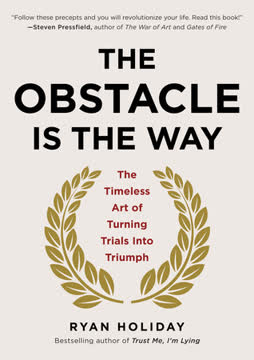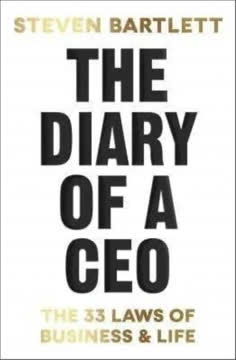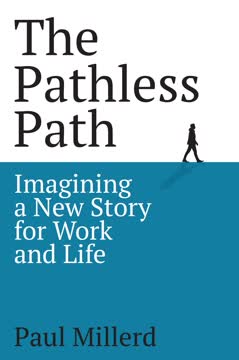Key Takeaways
1. Friction is the invisible force shaping human behavior and business success
Decreasing friction increases action.
The law of friction states that the level of action is inversely proportional to the level of friction. When you make something easier, people do more of it. When you make something more difficult, people do less of it. This applies to everything from consumer behavior to employee productivity.
Friction takes many forms:
- Physical effort required
- Mental effort or cognitive load
- Time and delay
- Complexity and confusion
- Bureaucratic obstacles
Businesses and organizations that identify and eliminate sources of friction gain a powerful competitive advantage. Reducing friction allows customers to more easily take desired actions, employees to work more efficiently, and processes to run more smoothly. The most successful companies obsess over minimizing customer effort at every touchpoint.
2. Reducing friction in customer experience drives loyalty and profitability
Ninety-six percent of customers who put forth high effort to resolve their issues are more disloyal.
Customer effort is key. Research shows that making things easy for customers is far more important for building loyalty than "delighting" them with above-and-beyond service. Companies should focus on removing obstacles and simplifying processes rather than investing in costly "wow" moments.
High-effort experiences drive disloyalty:
- 96% of customers reporting high-effort experiences become disloyal
- Only 9% of customers with low-effort experiences become disloyal
- High-effort customers are 4x less likely to repurchase
- 88% of high-effort customers say negative things about the company
To reduce customer effort, companies should resolve issues in a single contact, eliminate the need for customers to switch channels or repeat information, and empower frontline employees to solve problems. Even small friction reductions can have an outsized impact on customer loyalty and word-of-mouth.
3. Digital giants like Amazon and Google dominate by minimizing user effort
When you reduce friction, make something easy, people do more of it.
Frictionless design is at the core of the most successful digital companies. Amazon's 1-Click ordering and Prime membership remove friction from online shopping. Google's search predictions and autocomplete reduce typing effort. These seemingly small conveniences add up to create a compelling user experience that's hard for competitors to match.
Key friction-reducing innovations:
- Amazon's 1-Click ordering
- Google's search predictions and autocomplete
- Uber's seamless ride-hailing and payment
- Instagram and WhatsApp's simple sign-up process
By obsessively focusing on making things easy for users, these companies have achieved dominant market positions. Their frictionless experiences create habits and loyalty that keep customers coming back. Any company can apply these same principles to improve their digital products and services.
4. Bureaucracy and red tape create costly organizational drag
The US economy loses $3 trillion dollars in productivity annually due to excess bureaucracy.
Organizational drag refers to the cumulative impact of bureaucratic policies, needless meetings, excessive approvals, and other internal frictions that slow work and reduce productivity. This hidden tax on efficiency can cost companies billions in lost output.
Common sources of organizational drag:
- Unnecessary meetings
- Excessive emails
- Complex approval processes
- Redundant reports and paperwork
- Unclear decision-making authority
Leaders should actively work to identify and eliminate sources of organizational friction. This can involve streamlining processes, empowering employees, reducing unnecessary meetings and reports, and creating a culture of trust. Even small reductions in internal friction can yield significant productivity gains when applied across an entire organization.
5. Trust and empowerment reduce internal friction and boost performance
Employees at high-trust companies report: 74 percent less stress, 106 percent more energy at work, 50 percent higher productivity, 13 percent fewer sick days, 76 percent more engagement, 29 percent more satisfaction with their lives, 40 percent less burnout.
Trust drives performance. Research shows that high-trust organizations significantly outperform their peers. When employees feel trusted and empowered, they experience less stress, higher engagement, and greater productivity. Trust also reduces the need for bureaucratic control mechanisms that create friction.
Building a high-trust culture:
- Share information broadly
- Recognize excellent performance
- Give people choice over how to do their work
- Show vulnerability as a leader
- Invest in employee development
Leaders should focus on creating an environment of trust rather than implementing strict controls. This not only improves performance but also reduces the friction caused by excessive rules, approvals, and micromanagement. A culture of trust allows organizations to be more agile and responsive.
6. Habit formation succeeds through tiny, frictionless actions
After I pour my morning coffee, I will open my journal.
Tiny Habits is a behavior change method developed by Stanford researcher BJ Fogg. It involves reducing desired behaviors to their simplest, quickest form and anchoring them to existing habits. This makes new habits nearly frictionless to adopt.
Keys to the Tiny Habits method:
- Make the new behavior extremely small and easy
- Anchor it to an existing habit or routine
- Celebrate small wins to reinforce the habit
Examples of Tiny Habits include flossing one tooth after brushing or doing two push-ups after using the bathroom. By starting with ridiculously small actions, people can bypass the friction and resistance that often derails bigger habit changes. Over time, these tiny habits can grow into more significant behaviors.
7. Friction engineering can guide behavior when complete elimination is undesirable
If you want someone to do something, consider offering a much more difficult alternative. It will make the action you want seem easier.
Friction design involves strategically adding or preserving friction to guide behavior in desired directions. While reducing friction is often the goal, there are times when some friction is beneficial or necessary.
Examples of productive friction:
- "Cooling off" periods for major purchases
- Opt-out organ donation policies
- Placing healthy foods at eye level in cafeterias
- Adding steps to unsubscribe from essential services
By thoughtfully engineering friction, organizations can nudge people toward better choices while preserving freedom of choice. This approach can be particularly effective in areas like health, safety, and financial decision-making where completely frictionless experiences may lead to undesirable outcomes.
8. Cultural and regulatory friction impacts economic growth on a national scale
China's economy as measured by gross domestic product (GDP) grew a cumulative $82 trillion more than India's from 1987 to 2017, even though the two economies were initially similar in size.
National friction in the form of bureaucracy, corruption, and over-regulation can significantly hinder economic growth. Countries with streamlined business processes and low regulatory burdens tend to see faster economic development and higher standards of living.
Factors contributing to national friction:
- Complex business registration processes
- Inefficient legal systems
- Corruption and bribery
- Excessive occupational licensing
- Inflexible labor laws
The World Bank's "Ease of Doing Business" rankings highlight how reducing friction through regulatory reform can spur economic growth. Countries that make it easier to start and operate businesses see increased entrepreneurship, job creation, and overall economic dynamism. Policymakers should focus on eliminating unnecessary barriers to business activity.
9. Imaginary friction from cognitive disfluency affects decision-making
When subjects read the descriptions in an easy-to-read font, just 17 percent couldn't decide which phone they preferred. When the descriptions were printed in a more difficult font, the percentage shot up to 41 percent.
Cognitive fluency refers to the ease with which our brains process information. When information is presented in a way that's harder to process (disfluent), it creates a form of imaginary friction that can impact decision-making and behavior.
Effects of cognitive disfluency:
- Tasks seem more difficult and time-consuming
- Risks appear higher
- Decision-making is impaired
- Compliance with instructions decreases
Even small changes in how information is presented can have significant impacts. Using clear, easy-to-read fonts and simple language can reduce this imaginary friction. This is particularly important in areas like medical instructions, financial disclosures, and user interfaces where clarity and ease of understanding are crucial.
Last updated:
FAQ
1. What is FRICTION―The Untapped Force That Can Be Your Most Powerful Advantage by Roger Dooley about?
- Core concept of friction: The book explores friction as any unnecessary obstacle—time, effort, or money—that impedes tasks in business, government, and daily life.
- Behavioral impact: Roger Dooley demonstrates how friction influences decisions, habits, productivity, and organizational outcomes.
- Broad application: The book covers friction in customer experience, internal processes, technology, and even national economies, showing its pervasive effects.
- Actionable focus: Dooley provides readers with tools and “friction goggles” to identify, reduce, or strategically add friction for better results.
2. Why should I read FRICTION by Roger Dooley?
- Improve productivity and satisfaction: The book reveals how eliminating unnecessary friction can save time, reduce costs, and increase satisfaction for both employees and customers.
- Behavioral insights: It introduces frameworks like the Fogg Behavior Model and Persuasion Slide to explain how friction interacts with motivation and ability.
- Practical strategies: Readers gain actionable methods to spot and address friction points in organizations, technology, and daily habits.
- Expert endorsements: The book is praised by thought leaders like Robert Cialdini, Richard Thaler, and Daniel Pink for its practical and transformative insights.
3. What are the key takeaways from FRICTION by Roger Dooley?
- Reducing friction increases action: The fundamental law is that “Decreasing friction increases action,” making tasks easier leads to more engagement and better outcomes.
- Friction is costly but fixable: Friction causes massive losses in e-commerce, productivity, and customer satisfaction, but can be systematically identified and reduced.
- Internal and external impact: Friction affects both customer experience and internal business processes, and addressing it can yield significant benefits.
- Strategic use of friction: Sometimes, adding friction can help guide behavior in positive ways, such as discouraging undesirable actions.
4. How does Roger Dooley define and categorize friction in FRICTION?
- Physical and cognitive friction: Physical friction includes tangible obstacles like complex forms or long lines, while cognitive friction involves mental effort, such as confusing instructions or decision fatigue.
- Organizational and bureaucratic friction: Excessive rules, meetings, and red tape create drag within companies and governments, reducing efficiency and morale.
- Digital friction: Poorly designed user interfaces, excessive emails, and complicated apps frustrate users and reduce engagement.
- Imaginary friction: Cognitive disfluency, or perceived difficulty, can deter decisions even when the actual task is simple.
5. What is the “law of friction” in FRICTION by Roger Dooley?
- Basic principle: The law states that “Decreasing friction increases action,” meaning people are more likely to do something if it requires less effort.
- Inverse relationship: The level of action is inversely proportional to the level of friction; more friction means less action and vice versa.
- Corollaries: Making something easier increases the likelihood and frequency of action, while making it harder reduces participation.
- Behavioral economics tie-in: The law aligns with the “law of least effort,” a core principle in behavioral science.
6. How does FRICTION by Roger Dooley relate to behavioral economics and motivation?
- Fogg Behavior Model: The book discusses how behavior occurs when motivation, ability (low friction), and a prompt converge; reducing friction increases ability.
- Friction vs. motivation: Friction is described as the “mortal enemy of motivation”—even highly motivated people may avoid actions if friction is too high.
- Nudges and defaults: Making the desired behavior the path of least resistance, such as through automatic enrollment, increases compliance.
- Law of least effort: People naturally choose the easiest path, reinforcing the importance of reducing friction to influence behavior.
7. What are some real-world examples of friction reduction in business and customer experience from FRICTION?
- Amazon’s innovations: 1-Click ordering, permanent login, and frustration-free packaging reduce customer effort and increase loyalty.
- Alibaba’s New Retail: Seamless integration of physical and digital shopping with mobile apps and easy payment enhances customer experience in China.
- Disney’s MagicBand: Eliminating friction in park entry, payments, and ride lines improved guest satisfaction and increased revenue.
- Securifi’s router: A user-friendly touchscreen interface drastically reduced setup friction, leading to market success.
8. How does FRICTION by Roger Dooley address internal business friction and bureaucracy?
- Organizational drag: Bureaucracy, pointless meetings, and excessive procedures slow decision-making and reduce productivity.
- Leadership examples: Jack Welch’s delayering at GE and Michael Abrashoff’s rule-busting on the USS Benfold show how reducing internal friction boosts agility and engagement.
- Meeting and email overload: Excessive meetings and emails waste time; companies like Ferrari and others have implemented limits to reduce this friction.
- Kafka Brigade: A Dutch initiative empowers citizens and employees to report and challenge bureaucratic friction, leading to meaningful improvements.
9. What is the impact of friction on national economies, as discussed in FRICTION by Roger Dooley?
- Comparative growth: China’s rapid economic growth is contrasted with India’s slower progress, attributed in part to India’s high bureaucratic friction.
- Ease of doing business: World Bank data shows China’s shorter times for business processes foster entrepreneurship and middle-class growth.
- Economic cost: Excessive regulations and red tape in India hinder business formation and job creation, illustrating how national-level friction affects prosperity.
- Broader lesson: Reducing friction at the national level can have transformative effects on economic development.
10. How does trust influence friction, according to FRICTION by Roger Dooley?
- Trust reduces controls: High-trust environments require fewer rules and checks, lowering friction in transactions and workflows.
- Science of trust: Research by Paul Zak shows that trust increases productivity, engagement, and lowers stress in organizations.
- Distrust-driven friction: Rules based on distrust add unnecessary burdens; removing them saves time and fosters a positive culture.
- Practical implication: Building trust can be a powerful strategy for reducing friction and improving organizational performance.
11. How can friction be deliberately added to influence behavior, as described in FRICTION by Roger Dooley?
- Friction engineering: Adding small, often unnoticed obstacles can reduce undesirable behaviors, such as moving candy bowls farther away to decrease consumption.
- Digital examples: Platforms like Nextdoor added friction to crime reporting forms to reduce racist posts by requiring more detailed descriptions.
- Marketing applications: Offering a difficult alternative (like a long web form) can nudge users toward a preferred action (like calling a phone number).
- Behavioral design: Strategic addition of friction can help guide people toward or away from specific behaviors.
12. What practical advice does Roger Dooley offer for habit formation and reducing friction in daily life and business?
- Tiny Habits method: Start with very small, easy actions (e.g., flossing one tooth) anchored to existing routines to build lasting habits with minimal friction.
- Habit stacking: Combine new habits with established ones to create reinforcing chains, but keep initial commitments small to avoid failure.
- Add friction to bad habits: Increase difficulty for undesirable behaviors (e.g., unplugging the TV) to reduce their occurrence.
- Customer experience tips: Resolve issues in a single contact, avoid transfers, and eliminate repetitive information requests to lower customer effort and increase loyalty.
Review Summary
FRICTION―The Untapped Force That Can Be Your Most Powerful Advantage receives positive reviews for its insightful exploration of friction in business and daily life. Readers appreciate the concept's applicability and the numerous examples provided, though some find the book overly long. Many praise Dooley's writing style and research, noting the book's potential to change perspectives on processes and consumer behavior. The audiobook version is lauded for making drives enjoyable. While primarily focused on business applications, the book also touches on personal life and government bureaucracy, making it a valuable read for those interested in efficiency and marketing.
Similar Books










Download PDF
Download EPUB
.epub digital book format is ideal for reading ebooks on phones, tablets, and e-readers.





